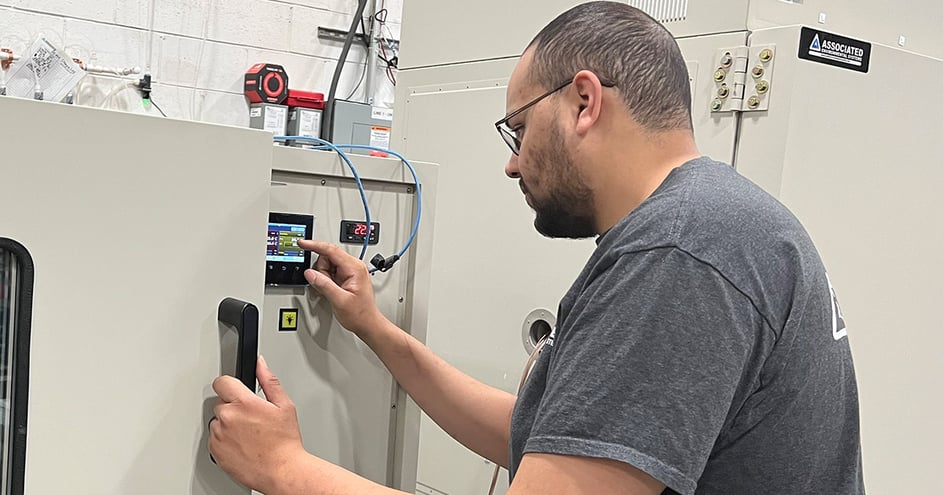When Should I Calibrate My Test Chamber?

As with any sophisticated technology, environmental test chambers require regular maintenance. As time goes on, not only do parts experience wear and tear or breakdown, but components dedicated to measurement can lose their precision.
You must calibrate test chambers periodically to remedy this. Otherwise, you risk compromising data and adding unnecessary downtime to your testing schedule.
Here’s what you need to know about calibration and how frequently it should be done.
When to Calibrate a Test Chamber
First, it’s important to work with a reputable technical expert to have your chambers calibrated. They’ll advise you on best practices and can schedule calibration throughout the calendar year as needed.
Typically, it is best to have your test chambers calibrated once every six months to a year.
This is because various chamber components, such as controllers, can experience drift. This can affect the overall accuracy of your test chambers.
Calibration ensures your devices remain accurate and continue to meet national and international testing requirements. It also yields quality data and gives you precise control of your testing.
When you fail to regularly calibrate your chambers, you run the risk of displaying inaccurate readings, making test results unreliable.
Your business cannot afford to cut corners when it comes to calibration. Doing so may result in unsafe products or items going to market that don’t meet consumers’ expectations. Furthermore, failure of an environmental chamber due to lack of calibration could cost more than calibrating your equipment regularly.
Factors That Impact Calibration Frequency
Calibration frequency will vary to some degree depending on the chambers’ size and performance, but the principles remain the same—examine all components to ensure testing remains reliable and consistent.
When calibrating test chambers, engineers will first look to the manufacturer’s recommendations. These will give you the proper frequency, but it’s just a starting point. The nature of your testing projects plays a major role in determining how frequently chambers need calibration.
For instance, large projects with heavy components can shorten the time in between calibrations. And, of course, if your team conducts a high volume of tests, you’ll need to recalibrate sooner than the average user.
Consulting an experienced manufacturer that also maintains test chambers can help you nail down a routine maintenance schedule, including calibration.
Standard calibration should involve several common features, whether you conduct it yourself or call a service technician. These features include accurate measurement testing and measurement of uncertainty ratio. Both assist with determining when a chamber begins drifting.
Furthermore, proper calibration will entail traceability, aligning measurements with national and international industry standards.
Getting Calibration Service
Test chamber downtime can be incredibly costly for an operation. It slows down research and development, and, of course, delays production. Alternatively, working with a dependable manufacturer who delivers on-site calibration according to an outlined schedule can keep you on schedule.
By having calibration services come to your lab, you can focus on what you do best while having confidence that an experienced expert is keeping your test chambers calibrated and ready to go, with limited downtime. This minimizes operational disruptions and keeps timelines tight.


